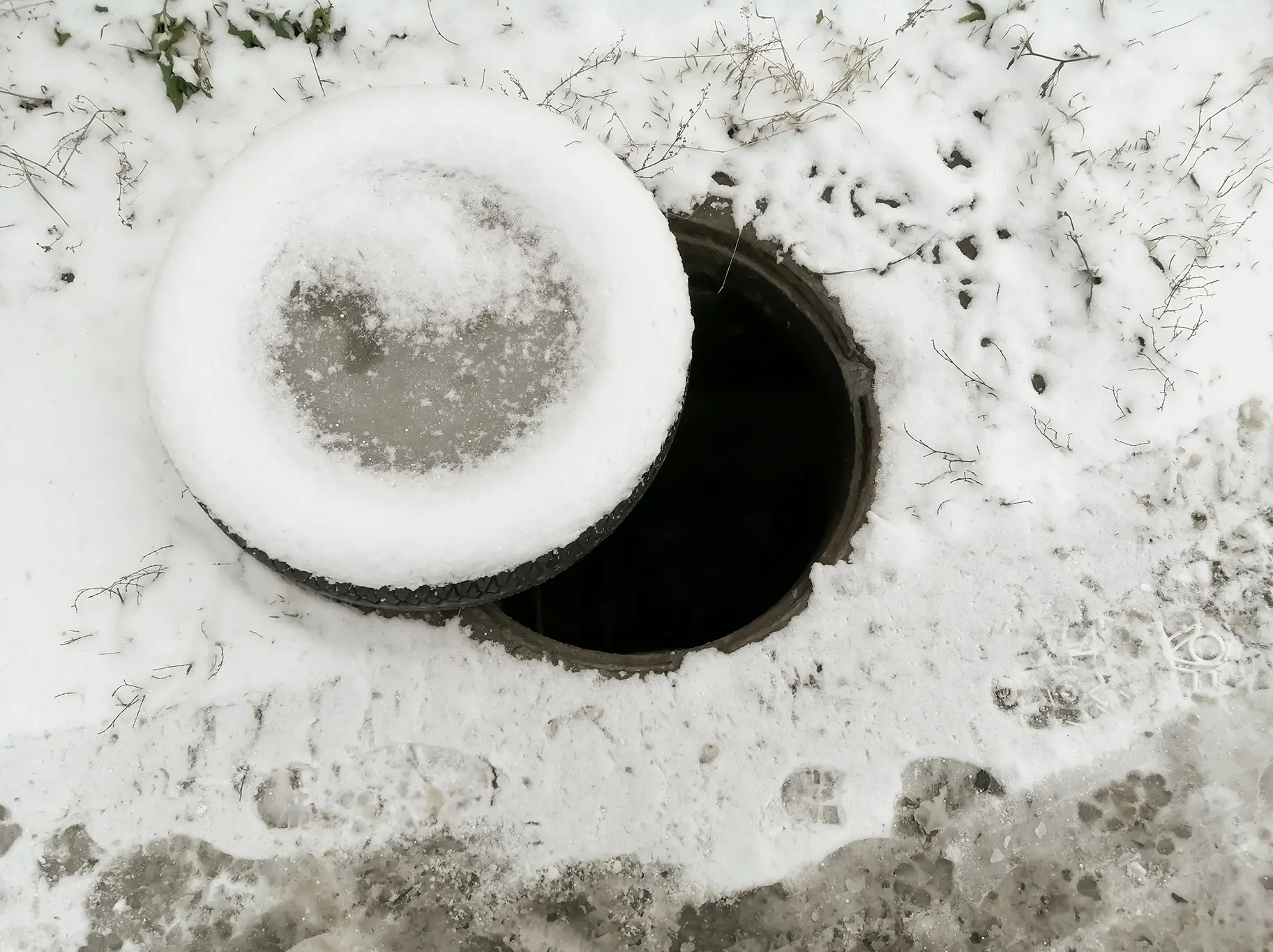When using a cistern, there are a few things to consider before the onset of winter. This article gives an overview of what to do in which case.
How extensive the winterization work required is and how urgently it needs to be carried out depends largely on the regional climate conditions, the type of cistern (concrete has advantages over plastic and larger cisterns over smaller ones), which pump is used and how the supply and drainage lines are designed.
Why does anything have to be done before winter at all? The reason for this is that water turns into ice at sub-zero temperatures. Ice has a larger volume than water and therefore spreads out and presses on the outer walls of the cistern, pipes or the components used. This can lead to destruction or damage.
In this context, it should be noted that the manufacturer’s labeling of a cistern or other components as “winterproof” basically only means that the material used is suitable for winter. It does not, however, mean that the product can withstand freezing water.
Below is a list of which winterizing measures are necessary for which type of cistern:
Rain barrel/Above-ground cistern
The full range of measures must be taken here:
Water in the above-ground cistern/rain barrel
The water in the above-ground cistern/rain barrel must be drained completely. There is usually an outlet opening on the side or in the bottom for this. If not, you can use the connection opening for the tap or pump and tip out the remaining water or pump it out with a pump. A small amount of water remaining, 1/2 or 1 inch, is fine, but no more should remain inside. Since the empty cistern is quite light, you should anchor it or weigh it down with a heavy object to protect it from the wind.
An exception to this are rain barrels made of wood, which, unlike those made of plastic or metal, should remain filled even in winter (ideal fill level: three quarters). This is because wood is naturally quite elastic and therefore frost-resistant, and the water pressure of the filled barrel also keeps the shape stable. If the barrel were left out, the wood would contract over the winter and there would be a greater likelihood of leaks.
Pump
If a pump is used, it must be disconnected from the power supply, turned off if necessary, and stored in a frost-free place. The same applies to things that belong to the pump, such as a pressure switch or a filter.
Supply line
The water supply line to the cistern/rain barrel must be disconnected so that no more water can flow in. If there is water in the supply line, then this must be removed.
Water supply from an above-ground cistern/rain barrel
The line or hose that leads away from the cistern must also be cleared of water. And subsequently also any connected water socket or garden shower. If this is used to feed an irrigation system, the entire irrigation pipeline, including associated components such as computers, solenoid valves and sprinklers, must be cleared of water.
The situation is somewhat different when it comes to a cistern sunk in the ground and the upper edge of the water level in the cistern is below the frost line. If this is not the case, as is the case with flat plastic tanks, for example, the same criteria apply to winter storage as for an above-ground cistern. An additional criterion for protection against frost is that there is no major exchange of air between the cistern and the outside area.
Underground cistern
The following winterization measures are necessary for a cistern located underground in a frost-free area.
Water in the underground cistern
As the upper edge of the water level is below the frost line and the water underneath also warms from below, it is not necessary to drain such a cistern. The water can stay in the cistern over the winter.
Tip: If you want to be on the safe side, you can also place an ice-preventing device on the water surface. You can buy this ready-made or you can simply use an existing Styrodur plate, an empty plastic canister or an old tire instead. In this way, if the water surface is completely frozen over, the ice would not press against the cistern’s outer walls, but would first spread towards the less resistant ice-preventing device and compress it. Additional insulation of the cistern cover also increases safety.
Pump
As the water does not freeze, a cistern pump standing in it is also safe and does not need to be removed. If a suction pump standing outside the cistern is used instead, then this must be dismantled and stored in a frost-proof manner. The same applies to pump accessories such as pressure switches and filters if they are not in a frost-proof area.
Supply line
The water supply line to the cistern must be disconnected so that no more water flows in. If there is still water in it, then this must be removed. An exception would be cisterns that are used all year round and have special requirements for the pipes, see the point below.
Water supply from underground cistern
As with the above-ground cistern, all pipes leading away from the pump and all connected components must be drained and it must be ensured that no water can flow in (exception: cisterns that are used all year round).
Emptying the pipes in the riser, which carries the water on the pressure side from the submersible pump in the cistern upwards, can be quite complicated and time-consuming. If this is the case, then you could alternatively consider interrupting the riser in the frost-free area with a quick coupling or a drain valve, so that you can empty the pipe above this line in one go and leave the rest of the pipe in the cistern. In the best case, you have already considered such a solution when you built the cistern.
Cistern used all year round
Use all year round is particularly advantageous or necessary if the cistern is used for domestic water supply in the household (toilet, washing machine). In order for this to be possible, the following criteria must be met:
- The cistern must be sunk and the upper edge of the water level must be below the frost line.
- The supply line to the cistern must also be in a frost-proof area throughout, i.e. covered with earth for at least 20 to 30 inches.
- The same applies to the lines leading from the cistern pump to the suppliers and to the cistern overflow.
- Pressure switches and filters must be in a frost-proof area.
- The gutter and downpipe should be free of dirt; ideally, this should always be checked before winter and leaves etc. removed if necessary.
If the pipes are not laid deep enough or if the gutter is frozen, you may be able to use a heating strip or gutter heater, which is placed in the pipe or gutter and gives off heat when there is a risk of frost.

